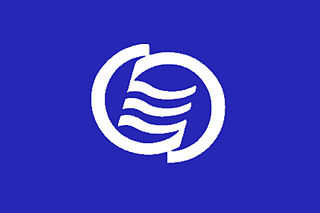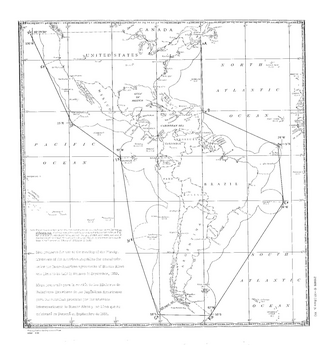
Latin America refers to a cultural region of the Americas where Romance languages are predominantly spoken, primarily in the form of Spanish and Portuguese, and to a lesser extent, Italian dialects, French and its creoles. There is no precise or official inclusion list. Latin America is defined according to cultural identity, not geography, and as such it includes countries in both North and South America. Most countries south of the United States tend to be included: Mexico and the countries of Central America, South America and the Caribbean. Despite being in the same geographical region, English- and Dutch-speaking countries are sometimes excluded. In a narrower sense, it often refers to Spanish America plus Brazil. Related terms are the narrower Hispanic America, which exclusively refers to Spanish-speaking nations, and the broader Ibero-America, which includes all Iberic countries in the Americas and occasionally European countries like Spain and Portugal.

The Contadora Group was an initiative launched in the early 1980s by the foreign ministers of Colombia, Mexico, Panama and Venezuela to deal with the Central American crisis, which were threatening to destabilize the entire Central American region.

The Organization of Ibero-American States, formally the Organization of Ibero-American States for Education, Science and Culture, is an international organization made up of 23 members states of Iberophone nations in Europe and the Americas, as well as one member in Africa. The OEI's membership is composed of all of the sovereign states of Ibero-America and the Iberian Peninsula, as well as Equatorial Guinea. All members are Portuguese and Spanish speaking nations, in addition to Andorra, which is predominantly Catalan speaking, though the organization does not include all the Iberophone nations of the world.

The Inter-American Treaty of Reciprocal Assistance is an intergovernmental collective security agreement signed in 1947 in Rio de Janeiro at a meeting of the American states.

The Union of South American Nations (USAN), sometimes also referred to as the South American Union, abbreviated in Spanish as UNASUR and in Portuguese as UNASUL, is an intergovernmental regional organization. It once comprised twelve South American countries; as of 2019, most have withdrawn. It was set up by Hugo Chavez to counteract the influence of the United States in the region.

Latin Americans are the citizens of Latin American countries.

The Association of Caribbean States is an advisory association of nations centered on the Caribbean Basin. It was formed with the aim of promoting consultation, cooperation, and concerted action among all the countries of the Caribbean coastal area. The 5 main purposes of the ACS is to promote greater trade between the nations, enhance transportation, develop sustainable tourism, facilitate greater and more effective responses to local natural disasters, and to preserve and conserve the Caribbean Sea.

Pan-Americanism is a movement that seeks to create, encourage, and organize relationships, an association, and cooperation among the states of the Americas, through diplomatic, political, economic, and social means. The term Pan-Americanism was first used by the New York Evening Post in 1882 when referring to James G. Blaine’s proposal for a conference of American states in Washington D.C., gaining more popularity after the first conference in 1889. Through international conferences, Pan-Americanism embodies the spirit of cooperation to create and ratify treaties for the betterment in the Americas. Since 1826, the Americas have evolved the international conferences from an idea of revolutionary Simon Bolivar to the creation of an inter-America organization with the founding of the Organization of American States.

The Latin American Parliament (Parlatino) is a regional, permanent organization composed by the countries of Latin America and the Caribbean. It is a consultative assembly similar to the early European Parliament. Currently the institution is being considered to become the legislative organ of the Community of Latin American and Caribbean States.

The Latin American and the Caribbean Economic System, officially known as Sistema Económico Latinoamericano y del Caribe (SELA), is an organization founded in 1975 to promote economic cooperation and social development between Latin American and the Caribbean countries. In the early 1990s, its representatives consisted of members from 28 countries and took part in the General Agreement on Tariffs and Trade (GATT) negotiations, which led to a new global agreement on restrictions on trade and established the World Trade Organization (WTO).
The Christian Democrat Organization of America is an international organization made up of political parties, groups, and associations in North America and South America that promote the principles of Christian humanism. Affiliated with the Center Democratic International, it is a regional partner of the European People's Party and regional organizations of Christian Democratic parties in Asia and Africa.

The following outline is provided as an overview of and topical guide to South America.

CAF - Development Bank of Latin America and the Caribbean, formerly the Andean Development Corporation, is a Caracas based development bank whose mission is to promote sustainable development and regional integration in Latin America and the Caribbean, through the financing of projects of the public and private sectors, the provision of technical cooperation and other specialized services.
The integration of Latin America has a history going back to Spanish American and Brazilian independence, when there was discussion of creating a regional state or confederation of Latin American nations to protect the area's newly won autonomy. After several projects failed, the issue was not taken up again until the late 19th century, but now centered on the issue of international trade and with a sense of Pan-Americanism, owing to the United States of America taking a leading role in the project. The idea of granting these organizations a primarily political purpose did not become prominent again until the post-World War II period, which saw both the start of the Cold War and a climate of international cooperation that led to the creation of institutions such as the United Nations. It would not be until the mid-20th century that uniquely Latin American organizations were created.

The Panama Conference was a meeting of the foreign ministers of all the sovereign nations in North and South America from 23 September to 3 October, 1939, shortly after the beginning of World War II. Its purpose was to establish a common policy for all these nations regarding the war, and in particular naval actions by the nations at war in waters near the Americas.

The Contadora support group was a group composed by Argentina, Brazil, Peru and Uruguay. It provided support for the Contadora group from South America, in the conflict between Nicaragua and the United States.

The term Latin America and the Caribbean (LAC) is an English-language acronym referring to the Latin American and the Caribbean region. The term LAC covers an extensive region, extending from The Bahamas and Mexico to Argentina and Chile. The region has over 670,230,000 people as of 2016, and spanned for 21,951,000 square kilometres (8,475,000 sq mi).














